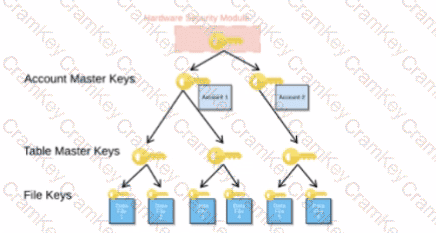According to the SnowPro Advanced: Architect documents and learning resources, the Snowflake functionality that should be used to meet these requirements are:
Use private connectivity from a cloud provider. This feature allows customers to connect to Snowflake from their own private network without exposing their data to the public Internet. Snowflake integrates with AWS PrivateLink, Azure Private Link, and Google Cloud Private Service Connect to offer private connectivity from customers’ VPCs or VNets to Snowflake endpoints. Customers can control how traffic reaches the Snowflake endpoint and avoid the need for proxies or public IP addresses123.
Set up SSO for federated authentication. This feature allows customers to use their existing identity provider (IdP) to authenticate users for SSO access to Snowflake. Snowflake supports most SAML 2.0-compliant vendors as an IdP, including Okta, Microsoft AD FS, Google G Suite, Microsoft Azure Active Directory, OneLogin, Ping Identity, and PingOne. By setting up SSO for federated authentication, customers can leverage their existing user credentials and profile information, and provide stronger security than username/password authentication4.
The other options are incorrect because they do not meet the requirements or are not feasible. Option A is incorrect because setting up replication does not allow users to connect from outside the company VPN. Replication is a feature of Snowflake that enables copying databases across accounts in different regions and cloud platforms. Replication does not affect the connectivity or visibility of the accounts5. Option B is incorrect because provisioning a unique company Tri-Secret Secure key does not affect the network or authentication requirements. Tri-Secret Secure is a feature of Snowflake that allows customers to manage their own encryption keys for data at rest in Snowflake, using a combination of three secrets: a master key, a service key, and a security password. Tri-Secret Secure provides an additional layer of security and control over the data encryption and decryption process, but it does not enable private connectivity or SSO6. Option E is incorrect because using a proxy Snowflake account outside the VPN, enabling client redirect for user logins, is not a supported or recommended way of meeting the requirements. Client redirect is a feature of Snowflake that allows customers to connect to a different Snowflake account than the one specified in the connection string. This feature is useful for scenarios such as cross-region failover, data sharing, and account migration, but it does not provide private connectivity or SSO7. References: AWS PrivateLink & Snowflake | Snowflake Documentation, Azure Private Link & Snowflake | Snowflake Documentation, Google Cloud Private Service Connect & Snowflake | Snowflake Documentation, Overview of Federated Authentication and SSO | Snowflake Documentation, Replicating Databases Across Multiple Accounts | Snowflake Documentation, Tri-Secret Secure | Snowflake Documentation, Redirecting Client Connections | Snowflake Documentation
